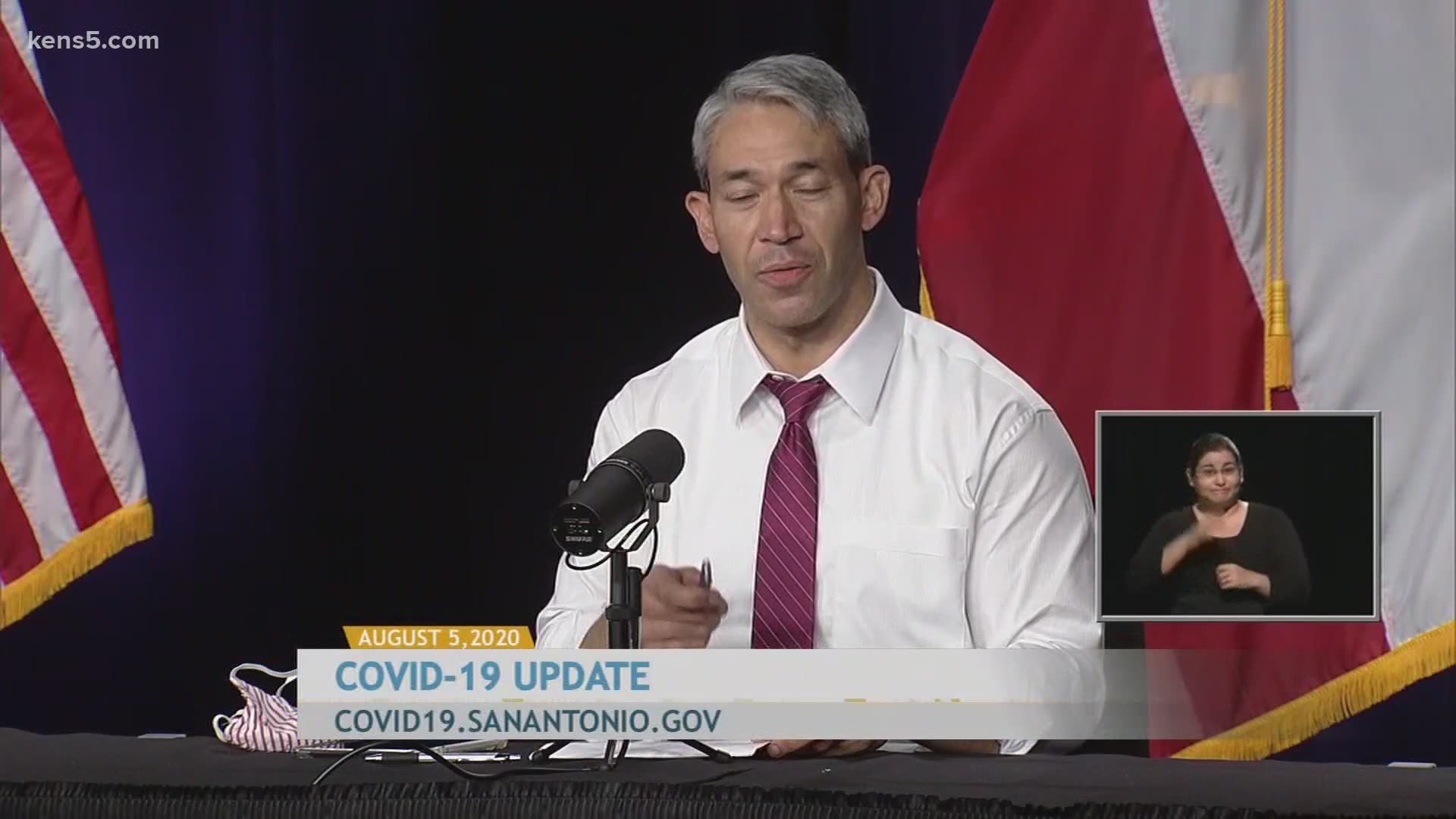SAN ANTONIO — We're tracking the latest numbers from the coronavirus pandemic in San Antonio and across Texas. Here are the latest numbers reported by Bexar and surrounding counties:
- Bexar County: 340 new cases were reported Wednesday, bringing the total number for the county to 41,614. The county death toll, meanwhile, rose to 394 after 14 additional fatalities were reported.
- Comal County: The county reported 56 new cases on Tuesday while its death toll rose reached 60 after another virus-related death. There have been a total of 2,287 cases of COVID-19 in the county. County officials also said there are 638 active coronavirus cases, while 1,589 residents have recovered.
- Hays County: Officials in Hays County on Wednesday reported show 38 new cases in the county and three additional virus-related deaths. As of Wednesday evening, there were a total of 4,969 lab-confirmed cases in the county (2,848 of which were active) while the death toll stodd at 34. 117 county residents have been hospitalized with the virus.
How Bexar County is trending
We're tracking how many coronavirus cases are confirmed in Bexar County each day from the time San Antonio Metro Health began reporting cases more than five months ago. Graphing those daily case numbers along a 14-day moving average provides an accurate picture of the curve in the San Antonio area and the direction we're heading amid the coronavirus.
On Wednesday, Mayor Ron Nirenberg reported 340 more cases of the novel coronavirus for Bexar County, bringing the total to 41,614. He also reported 14 additional virus-related deaths; a total of 394 Bexar County residents have now lost their lives to COVID-19.
Nirenberg said the county's positivity rate is 15% and trending in the right direction, but added it is "still quite aways away from where we need to be."
"If we want to start talking about opening things up, we need to be at 5%," he said.

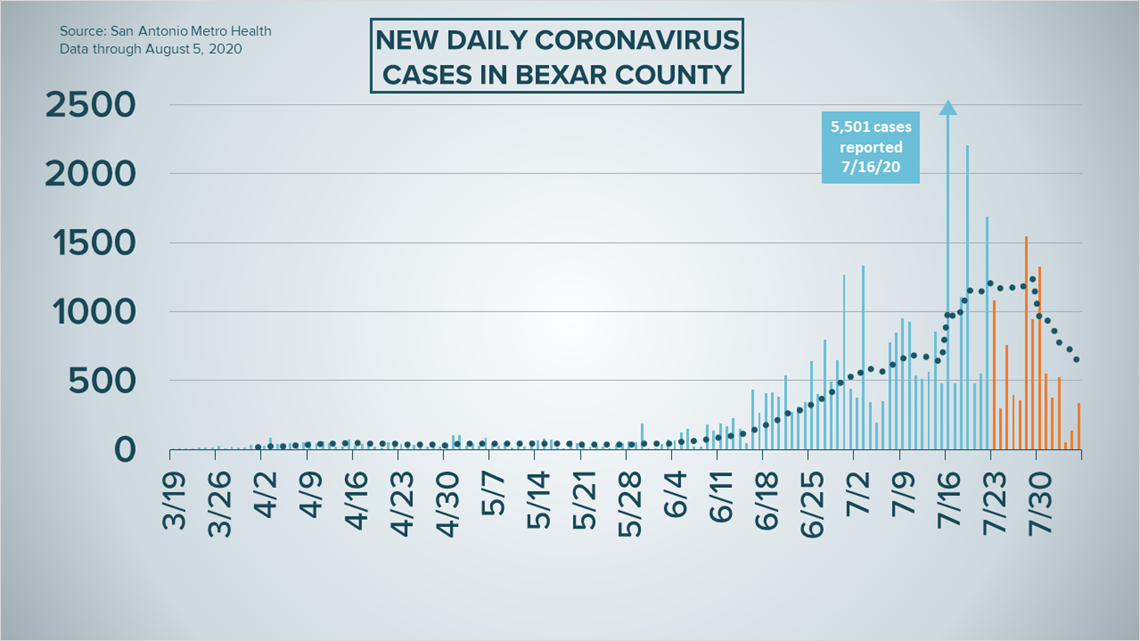
The mayor also reported that 817 county residents were hospitalized and receiving treatment for the coronavirus on Wednesday as that figure continues to trend in a positive direction. One fewer person is in intensive care (335), but four more people were utilizing ventilators (238) compared to Tuesday's numbers.
Locally, 13% of staffed hospital beds were ready to take a new coronavirus patient on Wednesday.

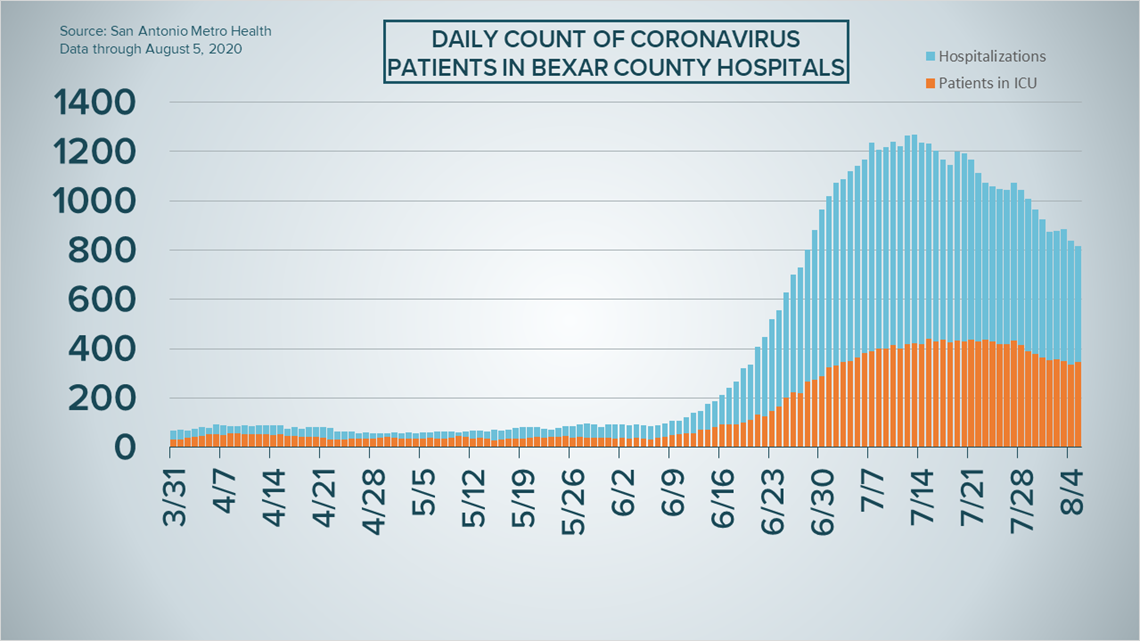
Coronavirus in Texas
Texas health authorities on Wednesday reported another 8,706 cases of the novel coronavirus, which continues current trends that began in mid-July. In all, 459,887 Texans have been diagnosed with COVID-19.

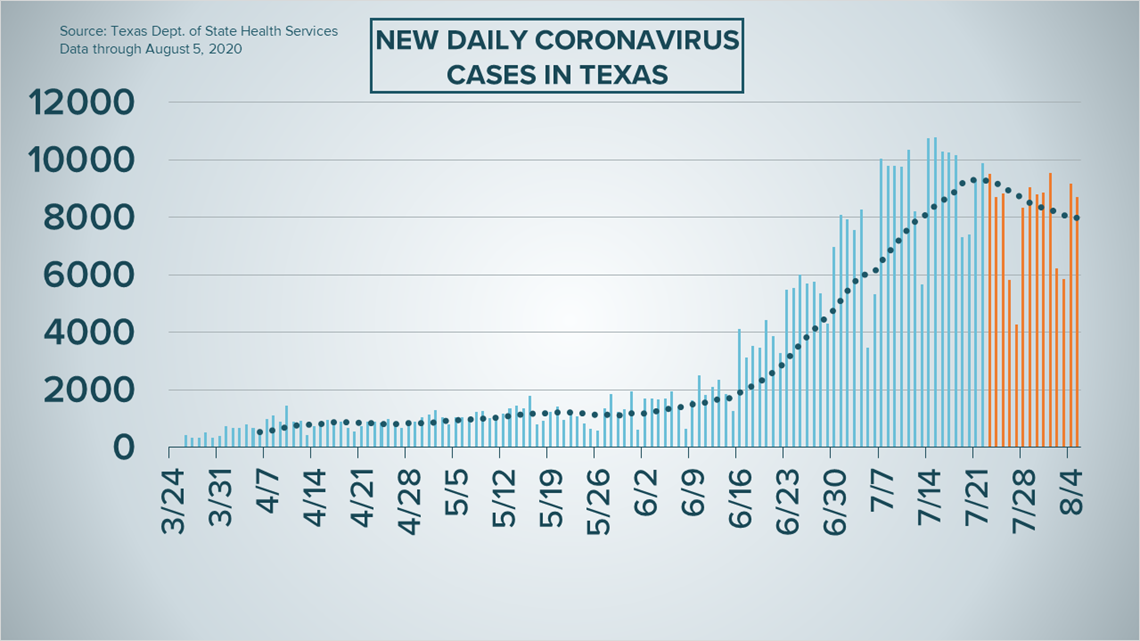
The state also reported 236 additional virus-related fatalities, bringing Texas's death toll to 7,497. Hospitalizations in Texas continue to trend downward. On Wednesday, 8,455 Texans were receiving treatment for COVID-19 reasons, which is 219 fewer than Tuesday.
It's been exactly a month since the number of current hospitalizations was below 8,500.

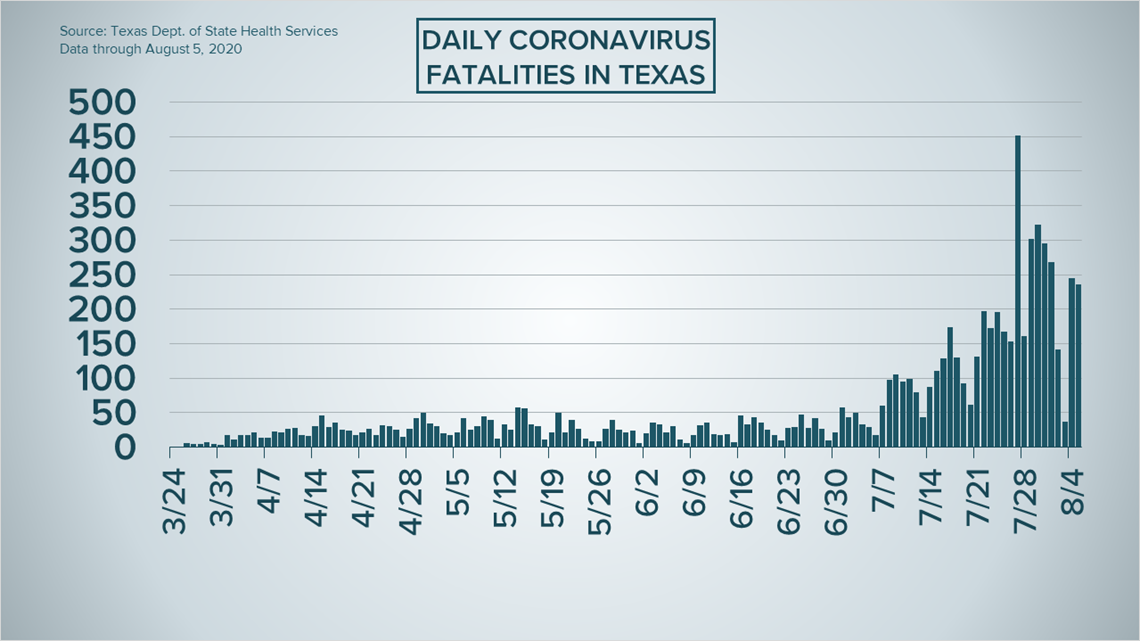
Latest Coronavirus Headlines
- Why it's important to have a plan for your pets during the pandemic
- Popovich praises NBA leadership, criticizes America's coronavirus response from leaders to citizens
- COVID-19 testing in the US is dropping, even as deaths mount
- Convalescent plasma donation gave son chance to say good-bye to father
- Gov. Abbott announces opening of McAllen Convention Center as a health care facility
- NEISD student starts COVID-19 survivor support group in honor of her father
- San Antonio area teachers not leaving classrooms in droves amid coronavirus concerns
- UT-Austin study shows majority of schools could see a coronavirus case in their first week
- US nears 5 million coronavirus cases, far outpacing other countries
Coronavirus symptoms
The symptoms of coronavirus can be similar to the flu or a bad cold. Symptoms include fever or chills, cough, shortness of breath or difficulty breathing, fatigue, muscle or body aches, headache, new loss of taste or smell sore throat, congestion or runny nose, nausea or vomiting and diarrhea, according to the Centers for Disease Control.
Most healthy people will have mild symptoms. A study of more than 72,000 patients by the Centers for Disease Control in China showed 80 percent of the cases there were mild.
But infections can cause pneumonia, severe acute respiratory syndrome, kidney failure, and even death, according to the World Health Organization. Older people with underlying health conditions are most at risk.
On June 25, the CDC expanded the list of groups at a higher risk of severe illness due to coronavirus.
Experts determined there was consistent evidence these conditions increase a person's risk, regardless of age:
- Chronic kidney disease
- COPD (chronic obstructive pulmonary disease)
- Obesity (BMI of 30 or higher)
- Immunocompromised state (weakened immune system) from solid organ transplant
- Serious heart conditions, such as heart failure, coronary artery disease, or cardiomyopathies
- Sickle cell disease
- Type 2 diabetes
The CDC believes symptoms may appear anywhere from two to 14 days after being exposed.
Human coronaviruses are usually spread...
- Between people who are in close contact with one another (within about 6 feet).
- Through respiratory droplets produced when an infected person coughs, sneezes or talks. These droplets can land in the mouths or noses of people who are nearby or possibly be inhaled into the lungs.
- Some recent studies have suggested that COVID-19 may be spread by people who are not showing symptoms.
Help stop the spread of coronavirus
- Stay home when you are sick.
- Eat and sleep separately from your family members
- Use different utensils and dishes
- Cover your cough or sneeze with your arm, not your hand.
- If you use a tissue, throw it in the trash.
Lower your risk
- Wash your hands often with soap and water for at least 20 seconds. If soap and water are not available, use an alcohol-based hand sanitizer.
- Avoid touching your eyes, nose, and mouth with unwashed hands.
- Avoid close contact with people who are sick.
- Clean and disinfect frequently touched objects and surfaces.
- The CDC recommends wearing a mask or cloth face covering if you have to be out due to an essential service or essential activity such as going to the grocery store.
- If you are 60 or over and have an underlying health condition such as cardiovascular disease, diabetes or respiratory illnesses like asthma or COPD, the World Health Organization advises you to try to avoid crowds or places where you might interact with people who are sick.

